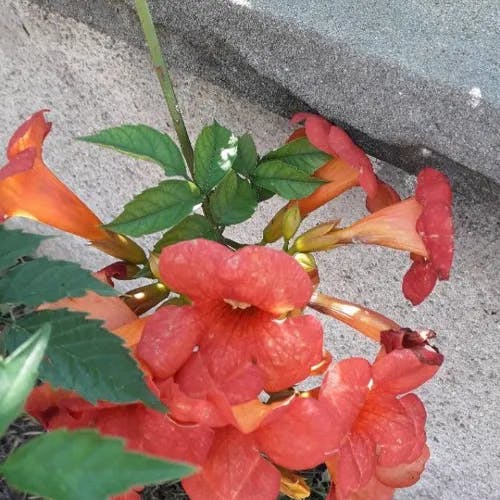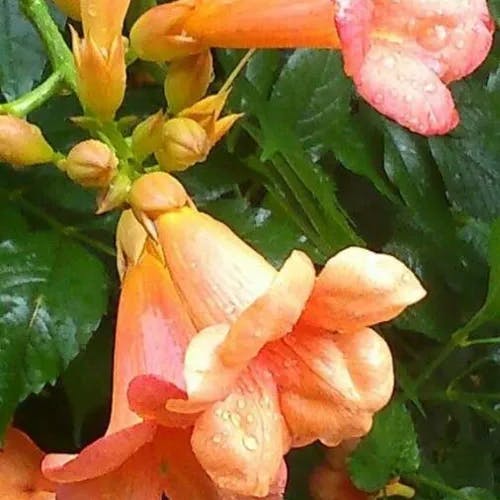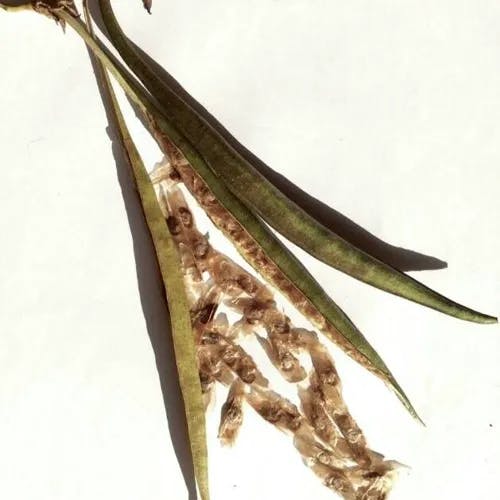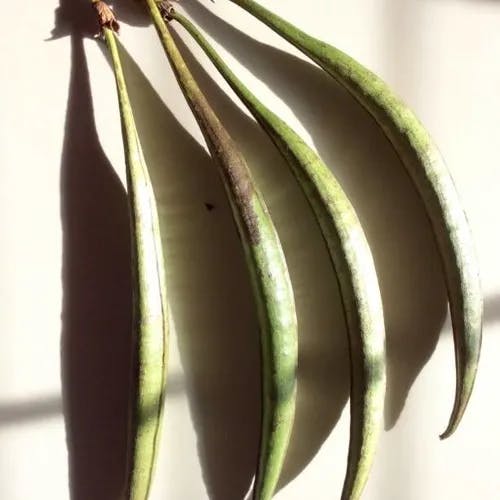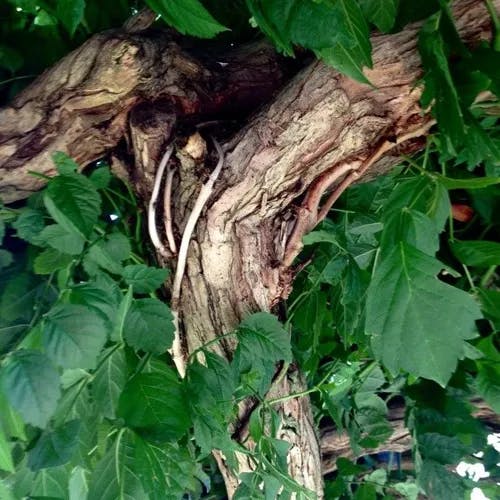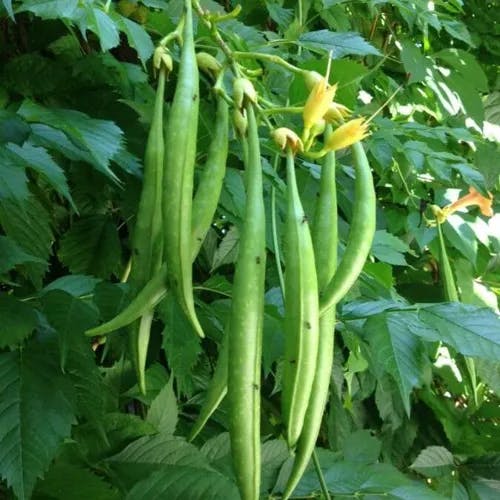Campsis grandiflora, also known as the Chinese trumpet-creeper, is a species of flowering plant in the family Bignoniaceae. It is native to East Asia, specifically China and Japan. This plant is a deciduous, woody, perennial vine that can grow up to 10 meters in height. It is characterized by its vigorous growth and can easily climb walls and trees with the help of its aerial roots. The flowers of Campsis grandiflora are its most striking feature. They are large, trumpet-shaped, and typically orange-red in color, although there are varieties that produce yellow or pink flowers. The flowers bloom in clusters from late summer to early autumn, attracting a variety of pollinators. The leaves of the Chinese trumpet-creeper are pinnately compound, with 7 to 9 leaflets. They are dark green in color and have a glossy surface. The fruit of Campsis grandiflora is a long, slender capsule that contains numerous winged seeds. These seeds are dispersed by wind, allowing the plant to spread effectively. In terms of cultivation, the Chinese trumpet-creeper is relatively easy to grow. It prefers full sun to partial shade and well-drained soil. It is also tolerant of a variety of soil types and pH levels. In the language of flowers, the Chinese trumpet-creeper symbolizes a "great love". This is likely due to its large, showy flowers and vigorous growth. There are several cultivars of Campsis grandiflora available, each with its own unique characteristics. Some popular varieties include 'Morning Calm', which has soft peach-colored flowers, and 'Indian Summer', which has deep orange-red flowers. In conclusion, Campsis grandiflora is a beautiful and versatile plant that is well-suited to a variety of garden settings. Its striking flowers, vigorous growth, and ease of cultivation make it a popular choice among gardeners.
0
0
